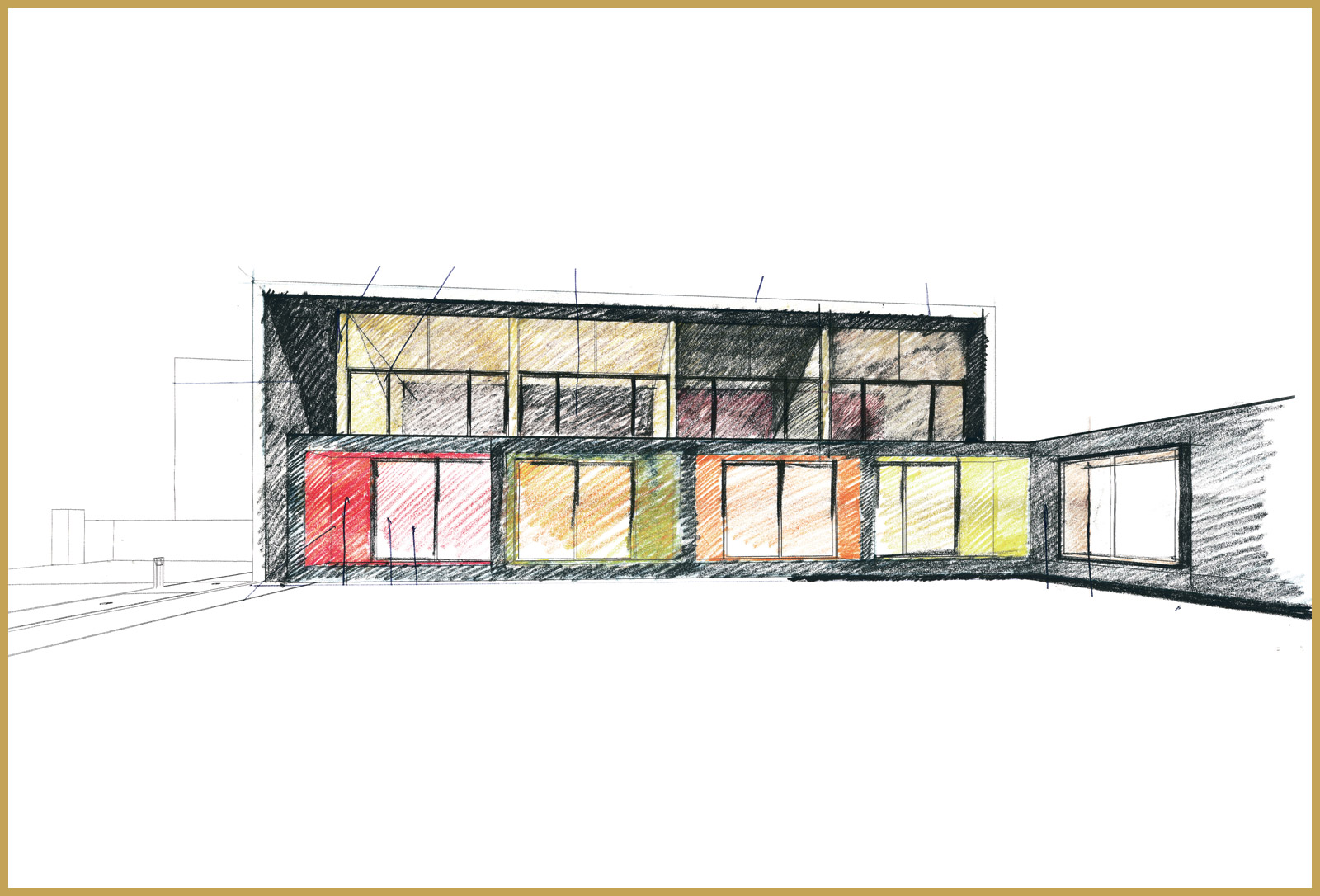The Next and Alessio Princic
ALESSIO PRINCIC, ARCHITECT
Claudia Persi Haines From the series “generazionedimezzo”: ALESSIO PRINCIC ARCHITETTO – Andrej Hravski, Claudia Persi Hain, Roberto Rigni – Idea
A lean-featured, intense man of few words, he prefers to express himself by drawing, rather than in talking, or writing. To describe his ideas, he enters the blank page unhesitatingly, with decisive strokes, always favouring the pen over the pencil. He shuns the ornamental use of intellectual justifications; of facile, decorative gestures and quotations. As well, he rejects the notions of homologation, of architecture as a celebration of the architect-as-a-maker, and of architecture-as-fashion.
He studied in two countries, from each learning ways of ‘doing’ architecture and being an architect. What he learnt as an apprentice, by collaborating with Valle and Marconi -two architects that he liked and respected – was determinant in his formative years. Now he has his own apprentice-collaborators with whom to share projects and ideas. He tends to foster their independence, and urges them to participate in national and international competitions. As a professional, he is very hard to please. An exacting task master with his collaborators -yet first demanding a lot from himself- he supervises a project painstakingly, at all stages, from beginning to end.
His direct involvement can be detected in his concern for the practical aspects of the work he is entrusted with; in his approach to the materials; in his meticulous attention to details. The forms he designs are rigorous, clear-cut; he privileges a purity of lines that is deceitfully simple. The spaces he creates, in fact, are not the work of a minimalist; they are warm, and welcoming. By entering them, one feels a sense of ease, and well-being. That is due to his choice of materials, and of textures that stimulate all sensorial perceptions; to his use of light and of a vast range of rich colours, all elements that blend in a sort of homogeneous, harmonious language.
A language, however, that is not necessarily spoken in his other projects. This because he considers each of his sites unique, a space that he enters at first just to understand its meaning and its potential. Only later does he speculate on ways to adapt it to the use and functions of the elements that will live in it, outside of it, and around; on ways to respond to those particular needs by experimenting, inventing, changing, trying out, and trying again. A process that is different for each site, and each project.
The general impression, however, is that his projects bear an imprint of sorts, and can be recognized, unmistakably, as his work. What they all share -be they public or private buildings, restorations, designs of interiors, or of urban sites- is, on the one hand, the architect’s interest and respect for the nature, history and meaning of each of the spaces he works on. On the other, it’s the architect’s concern for the particular needs of their users, so that they take possession of a space and make it their own, whether they happen to work or live inside it; whether they live within its environment and enjoy it from outside.








